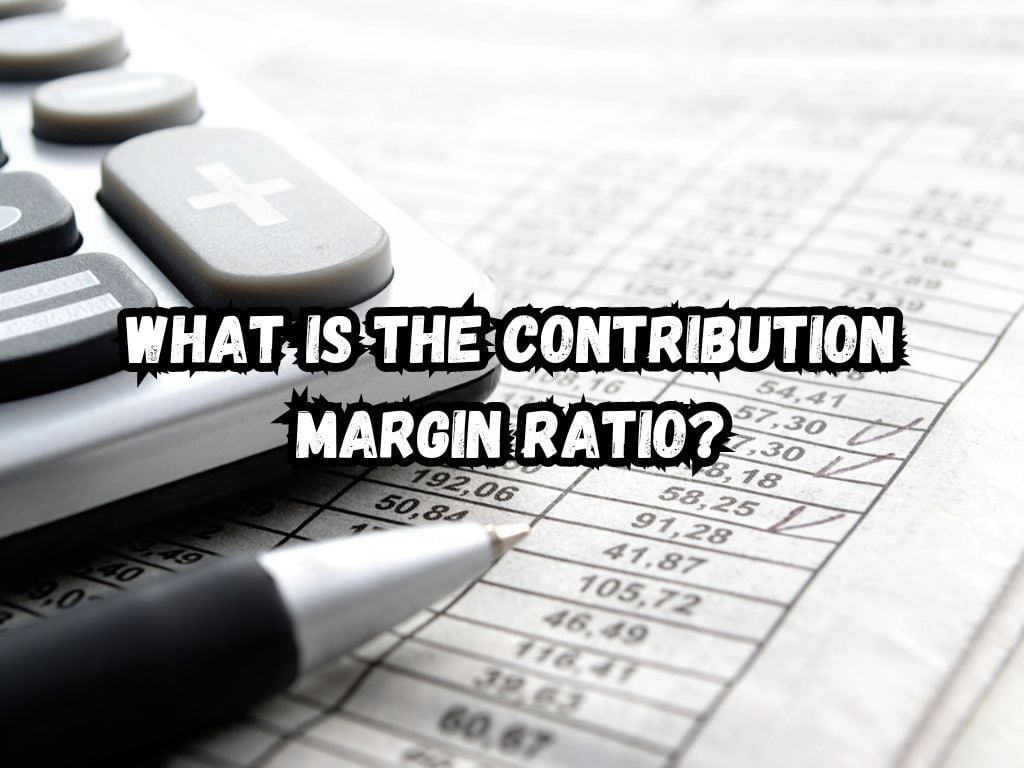In the realm of business, profit is the light that guides the path of sustainability and growth. Among the myriad financial indicators, the Contribution Margin Ratio emerges as a critical lighthouse, signaling the strength and performance of a company’s core operations.
Its understanding is as vital as it is strategic, influencing decisions from pricing to product line management.
This article unfolds the layers of what Is the contribution margin ratio, examining its definition, application, limitations, and real-life implications, setting the foundation for every entrepreneur and investor to make informed decisions.
What is the Contribution Margin Ratio?
At its simplest, the Contribution Margin Ratio measures how much profit each product makes without considering fixed costs. It answers a straightforward question: for every dollar of sales, how much is contributing to covering fixed expenses and, ultimately, profit?
This ratio takes center stage in assessing a company’s operational efficiency, painting a vivid picture of the revenue that can potentially transform into net income.
How to Calculate Contribution Margin Ratio?
The key to unlocking the mysteries of the Contribution Margin Ratio lies in understanding its calculation.
The magic formula consists of subtracting variable costs from sales revenue and dividing the result by the sales revenue itself. Variable costs are those that fluctuate with production volume, like raw materials and direct labor.
So, if a company sells a gadget for $200, and the variable costs to produce it are $150, the Contribution Margin is $50. When we divide $50 by the sales revenue of $200, the Contribution Margin Ratio is 0.25 or 25%.
This means that a quarter of every sales dollar is contributing to pay fixed costs and generate profit.

Interpreting the Contribution Margin Ratio
Interpretation of the Contribution Margin Ratio allows for the heartbeat of the business operation to be felt. A high ratio is akin to a strong pulse, signaling that sales are sufficiently above variable costs, ensuring a healthy flow towards covering fixed costs and profits.
In contrast, a low ratio indicates potential troubles, and a company that is not generating enough from sales to effortlessly glide over its variable expenses.
Contribution Margin Ratio in Decision-Making
With the imprint of the Contribution Margin Ratio on hand, managers can strategize effectively. This figure serves as a compass for setting product prices; it suggests when to cut costs or even when to discontinue a product.
Furthermore, it projects a beacon that guides the steering of sales targets. Consider its influence in sales forecasting: businesses routinely use this ratio to project the future, shaping financial landscapes grounded on pragmatic estimates.
Limitations of Contribution Margin Ratio
The Contribution Margin Ratio is not all-powerful and omnipotent; it has its kryptonite. It observes the world from a high vantage point, not accounting for the impacts of fixed costs or the complexities of cash flow.
These limitations prompt the wise to pair it with other perspectives to gain a full, three-dimensional view of a company’s financial health.
Case Study
Let us anchor the theoretical in the tangible with a case study. Picture Widget Inc., a company standing on the frontier of innovative home gadgets. With a selling price of $50 per widget, variable costs at $20, the Contribution Margin Ratio stands at 60%.
This promising figure galvanized the company’s decision to expand production, proving to be a cornerstone of their successful spike in profitability.

Frequently Asked Questions
Why is the Contribution Margin Ratio important in breakeven analysis?
The Contribution Margin Ratio is integral to breakeven analysis because it helps determine the sales volume needed to cover all costs. Knowing this threshold gives businesses a target to aim for profitability.
How does the Contribution Margin Ratio affect pricing strategy?
A robust Contribution Margin Ratio can signal room for competitive pricing or potential for premium pricing strategies. It’s a foundational metric for making informed pricing decisions in alignment with profit goals.
Can a negative Contribution Margin Ratio ever be a good sign?
A negative Contribution Margin Ratio typically sounds the alarm for a failing product line or pricing strategy. It’s often a signal to reassess the cost structure or value proposition of the product.
What factors can influence the Contribution Margin Ratio?
The Contribution Margin Ratio can be influenced by changes in production costs, alterations in product prices, shifts in product mix, and fluctuations in market demand. Each has the power to sway the ratio positively or negatively.
Conclusion
The Contribution Margin Ratio, although a simple metric, holds the keys to vast treasures of financial insight. It equips businesses with a profound awareness of their operational efficiency, guiding managerial decisions and influencing the investment directions.
Understanding and applying the Contribution Margin Ratio can blaze the trail towards profitability and success. While it may require companionship from other financial metrics for a holistic view, its worth in the arsenal of financial analysis is unequivocal.


 Tags:
Tags:










